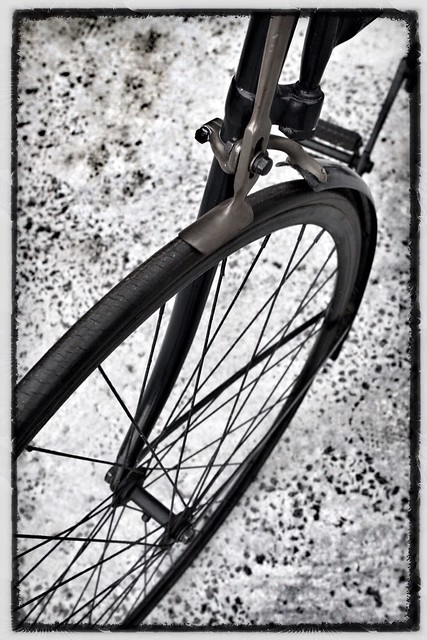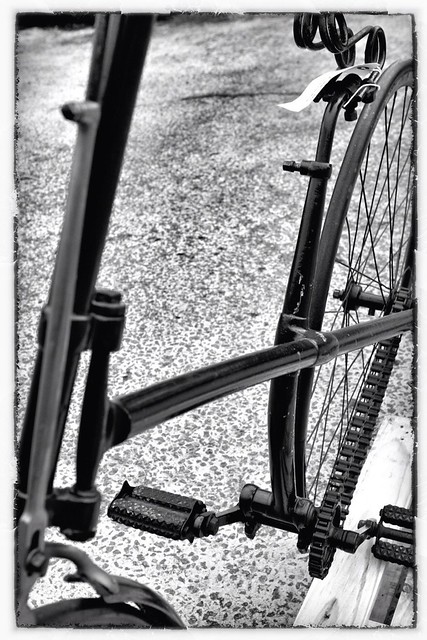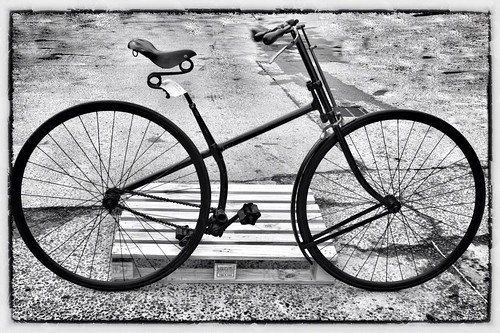The bicycle which led to Britain’s gold rush
With Olympic cycling champions coming out of our ears it’s easy to forget that before Chris Boardman’s victory at the Barcelona Games, no Briton had cycled to gold since 1920. Boardman’s crushing pursuit victory kick-started a revolution that eventually made Chris Hoy a knight of the realm and propelled Victoria Pendleton to multiple world championship victories, bread and shampoo sponsorship deals and a brief starring role in a wildly popular TV dancing competition.
 All of this may have been but dreams were it not for the Invincible made by the Surrey Machinist Co. of Great Suffolk Street, London. This company was noted for its high wheelers but in 1889 it created a bicycle that would have almost zero impact at the time but which, about 100 years later, went on to influence what would become the Lotus Superbike, the carbon monocoque bicycle used by Boardman in Barcelona.
All of this may have been but dreams were it not for the Invincible made by the Surrey Machinist Co. of Great Suffolk Street, London. This company was noted for its high wheelers but in 1889 it created a bicycle that would have almost zero impact at the time but which, about 100 years later, went on to influence what would become the Lotus Superbike, the carbon monocoque bicycle used by Boardman in Barcelona.
In the late 1980s the cycle designer Mike Burrows – a machinist with a workshop on a Norwich industrial estate and who, incidentally, once welded my touring back together, and with whom I time trialled back in the day – visited Coventry Transport Museum and had a light-bulb above the head moment when he saw the Invincible, a mono-stay cruciform bicycle that is surprisingly modern looking.
The Invincible uses a single fork on both wheels and Burrows recognized its engineering simplicity had aerodynamic potential. He adapted the idea for what was to become the famous Lotus bike (and which later inspired Cannondale’s Lefty fork) and the rest, as they say, is history.
The Invincible is one of many historic bicycles in Bartleet’s Bicycle Book, a 1931 book by Horace William Bartleet. Bartleet collected ‘old’ bicycles (they weren’t that old when he started saving them) and his collection of machines was later bequeathed to the City of Coventry, home to the British bicycle industry. It was Bartleet’s collection of bicycles which led to the creation of Coventry Transport Museum. Last week I was shown the Invincible by the bicycle collection curator Lesley Sayars and took it outside to get the photographs on this page. The bike is still in very good nick and looks nothing at all like contemporary machines. It would have been very much the ugly duckling in the late 1880s.
Bartleet describes the Invincible thus:
‘Invincible’ safety bicycle, made by J. S. Smith, proprietor of the Surrey Machinist Co. Ltd., Great Suffolk Street, London, S.E., in 1889.
Note the single “fork ” to both back and front wheels, the wheel spindle being supported at one end only: also the ball head, an unusual feature in 1889. There are no chain-stays. The ‘eccentric’ method provided for adjusting the chain is worth inspection. Weight 40.25 lbs. Purchased in Holloway, N. London.
The word “fork” is obviously incorrect when used to describe a device having only one “prong”; but from time immemorial cyclists have used it in connection with machines having their wheel spindles held to the frame at only one end. The principle is very old, but, like other features of cycle construction, it recurs at intervals in the history of the bicycle, each “inventor” thinking that he has evolved something new.
A contemporary magazine advert for the Invincible said it was “constructed with our Patent Parallel and Anti-friction Roller-bearings, Double Lever Brake, Improved Leg Rest, Steel V Rims, Light Steel Back bone, Indestructible Red India-Rubber Tires, and the Latest Improvements.”
NB The photos on this page were taken thanks to the kindness showed to me at the Coventry Transport Museum. I oldified them. Here’s an unmodified shot:







Pingback: Two bike designers ahead of their times – Bicycle Design